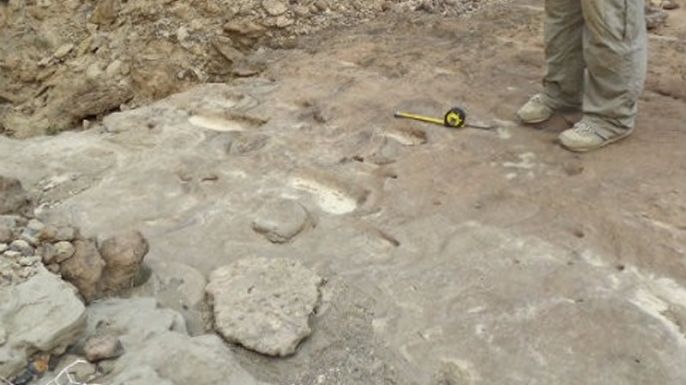Buried underneath thousands of years of sand and dirt, researchers have found what might be the oldest fossilized footprints. Lying within a dried up lake in Northeastern Africa is the preserved footprint that has shed new light on the Homo erectus species.
Homo erectus, or upright man, is believed to have developed in eastern Africa 1.9 million years ago. The name derives from the fact that this species walked upright. Homo erectus is similar to modern humans with that aspect, but the species had smaller brains and much larger teeth that we do now. Homo erectus is also the first species that is believed to have developed the method to controlling fire about 1 million years ago. Fossils for this species have been found in Europe, South Africa, China, Indonesia, and the Middle East.
Recently, researchers discovered fossilized Homo erectus footprints in the Danakil Desert located in Eritrea. These footprints might be the oldest fossilized footprints from this species to exist. Buried underneath a slab of stone that measured around 26 square meters, these footprints are believed to date back 800,000 years ago. Researchers from the National Museum of Eritrea and Italian archaeologists worked together to carefully discover what had been hiding underneath the stone slab.
The archaeologists also believe that the footprints that were found looked quite different when they were originally made. The researchers believe that these specific footprints were once identical to human footprints. However, these footprints were made alongside the lake that used to fill the area. The footprints were then filled with water, dried out, and then buried underneath sand. This process helped persevere the footprints, allowing us to view and study them today.
This discovery is going to hopefully give scientists a better look at Homo erectus and how they’ve evolved. The footprint should give them insights into the species posture and how it has evolved over time. Alfredo Coppa states that, “Footprints will reveal a lot about he evolution man, because they provide vital information about our ancestors’ gait and locomotion.”


